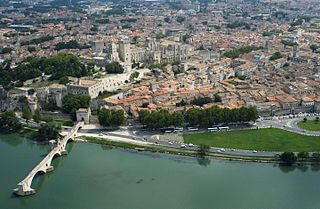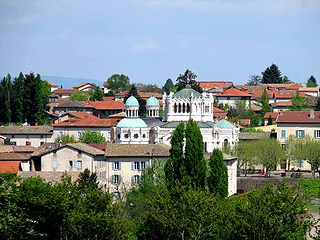
Avignon is the prefecture of the Vaucluse department in the Provence-Alpes-Côte d'Azur region of southeastern France. Located on the left bank of the river Rhône, the commune had a population of 93,671 as of the census results of 2017, with about 16,000 living in the ancient town centre enclosed by its medieval walls. It is France's 35th-largest metropolitan area according to INSEE with 337,039 inhabitants (2020), and France's 13th-largest urban unit with 459,533 inhabitants (2020). Its urban area was the fastest-growing in France from 1999 until 2010 with an increase of 76% of its population and an area increase of 136%. The Communauté d'agglomération du Grand Avignon, a cooperation structure of 16 communes, had 197,102 inhabitants in 2022.

Hérault is a department of the region of Occitania, Southern France. Named after the Hérault River, its prefecture is Montpellier. It had a population of 1,175,623 in 2019.

Cap d'Agde is a seaside resort on France's Mediterranean coast. It is located in the commune of Agde, in the Hérault department within the region of Occitanie. Cap d'Agde was planned by architect Jean Le Couteur as part of one of the largest state-run development schemes for holidays in French history. It is also one of the cities in France where an increasing number of retirees reside since 1980.

Béziers is a city in southern France. It is a subprefecture of the Hérault department in the Occitanie region. Every August Béziers hosts the famous Feria de Béziers, which is centred on bullfighting. A million visitors are attracted to the five-day event.

Ars-sur-Formans is a commune in the Ain department in the Auvergne-Rhône-Alpes region of eastern France.

Alexandra Rosenfeld is a French beauty pageant titleholder who elected Miss France 2006. Representing the region of Languedoc, she succeeded Cindy Fabre as the 77th Miss France on 3 December 2005. She also was crowned Miss Europe 2006.

The arrondissement of Béziers is an arrondissement of France in the Hérault department in the Occitanie région. Its INSEE code is 341 and its capital city is Béziers. It has 153 communes. Its population is 309,800 (2016), and its area is 3,091.2 km2 (1,193.5 sq mi).

Jean-Antoine Injalbert (1845–1933) was a much-decorated French sculptor, born in Béziers.

The site of the Château de Pézenas, a ruined medieval castle in the French town of Pézenas, in the département of Hérault.

Saint-Thibéry is a commune in the Hérault département in the Occitanie region in southern France.

Aubenton is a commune in the department of Aisne in the Hauts-de-France region of northern France.

Allos is a commune in the Alpes-de-Haute-Provence department in the Provence-Alpes-Côte d'Azur region of southeastern France.

Aigues-Vives is a commune in the Aude department in the Occitanie region of southern France.

Florensac is a commune in the Hérault department in southern France.
The Illustre Théâtre was a French theatre company set up by Molière on 30 June 1643, and shut down less than two years later on his imprisonment in August 1645. However, it is notable for its impact on the history of the French theatre. It was succeeded by la Troupe de Molière.

In folklore, a hobby horse is a costumed character that features in some traditional seasonal customs, processions and similar observances around the world. In England, they are particularly associated with May Day celebrations, mummers' plays and the Morris dance.
Jean Le Poulain was a French stage actor and stage director.
Petit pâté de Pézenas is a speciality of the town of Pézenas in the Hérault département of France.

The Château de Pézènes is a castle in the commune of Pézènes-les-Mines in the Hérault département of France.





















